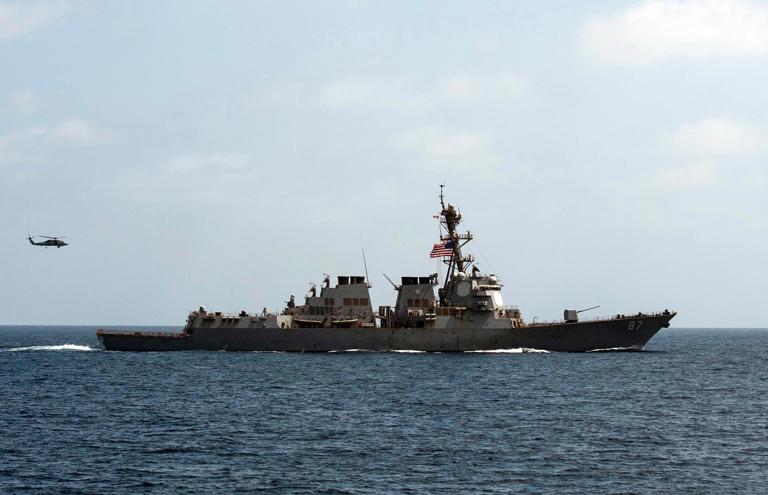
A US Navy captain was in disbelief when his destroyer came under fire from missiles never before seen in combat while dealing with pirates
US Navy warships that spent months battling the Houthis have faced unprecedented threats during their restless deployments, chief among them being anti-ship ballistic missiles, a deadly weapon that had never been used in combat until recently.
One of these warships, the Arleigh Burke-class destroyer USS Mason, found itself under fire from anti-ship ballistic missiles for the first time shortly after it joined the Navy’s counter-Houthi mission last fall. The missiles came in as it was responding to a hijacking attempt by pirates, marking the first operational use of such weapons.
The commanding officer of the Mason, which just returned home from a monthslong Middle East deployment, said that his first combat experience with these missiles was surprising.
Cmdr. Justin Smith recalled in a recent interview with Business Insider that his first reaction was disbelief. He was shocked that someone was actually firing missiles in their direction.
“My team responded incredibly well, from the detection to being able to make sure that the system was ready to engage,” he said.
Pirates and ASBMs
Five Somali pirates boarded the M/V Central Park on November 26 and attempted to hijack the commercial tanker as it was sailing through the Gulf of Aden. But before the small band of pirates could take over the vessel, nearly two dozen crew members were able to lock themselves in the citadel, a protected room that can serve as a safe haven in the event of a pirate attack.
The Central Park sent out a distress signal, leading the Mason and a Japanese warship to respond. When they arrived on site, they demanded the release of the vessel. The Somali pirates attempted to flee on a skiff, but an MH-60 helicopter attached to the Mason hunted them down and fired warning shots, stopping the pirates in their tracks.
Mason sailors then executed a visit, board, search, and seizure of the skiff, where they detained the pirates. Smith said it was the first time in five years that a Navy VBSS actually resulted in the capture of suspected pirates.
With the pirates secured, the Mason moved to assist the crew on the Central Park. The pirates had damaged the citadel’s door in their attempt to take over the ship to the point where it couldn’t be opened from either side. The American sailors had to find some additional tools to break in and rescue the mariners, who would have been stuck in the room until someone else came to rescue them.
It was right after this that the Mason first detected inbound anti-ship ballistic missiles. It is unclear if the Houthis were specifically targeting the coalition ships, the Central Park, or if it was unrelated to the situation the Mason was trying to address. The projectiles ultimately landed in the water several miles away.
Ready for future threats
Smith said he left the incident feeling confident in the Mason’s training and its ability to detect the threats. He said that the missiles are providing an opportunity for the Navy to ensure that it’s ready for future engagements.
After the Central Park incident, anti-ship ballistic missiles became a familiar threat to Navy warships defending merchant shipping lanes in the Red Sea and Gulf of Aden.
The Houthis, since their campaign began last fall, have launched dozens of anti-ship ballistic missiles from Yemen. Many of these were intercepted by the Dwight D. Eisenhower Carrier Strike Group, although some slipped past defenses and went on to strike commercial vessels. One attack in March killed several civilians.
The Iran-backed rebels have also targeted ships with airborne drones and exploding uncrewed surface vessels, the latter becoming increasingly common.
The Houthi attacks began as Israel launched a high-casualty war in Gaza following the October 7 massacre by Hamas operatives. The group has persisted in its attacks despite the costly efforts of the US and its allies to stop it.
Multiple Navy officers with the strike group have applauded their warships’ ability to engage the anti-ship ballistic missiles. In separate interviews with BI, they praised the combat systems for working as intended and their sailors for leaning on their training.
US rivals, such as China, have developed vast arsenals of these weapons, which have the potential to threaten maritime operations and have long been cause for concern.
Smith said that seeing the Eisenhower carrier strike group find success when it comes to intercepting the anti-ship ballistic missiles just “validated that what the Navy has done is keeping us on the correct trajectory for future threats.”
Source » msn.com





